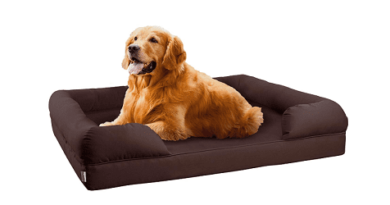How to know if my cat is hot?
How to know if my cat is hot?
As the hottest months of the year approach, our cats reduce their activity and tend to hide, especially in places where temperatures exceed 30 ºC and do not have air conditioning. Cats suffer a lot from the heat, especially those that are overweight or those that suffer from a disease.
Excessive heat affects their health and can cause heat stroke or hyperthermia, when the body temperature rises above what is considered physiological for cats.
A cat that grooms itself a lot, drinks more than usual, is listless, hides around the house or lies on cold surfaces, such as floors or the bathtub, is telling us that it is beginning to feel hot. But if you also have breathing difficulties or a bluish discoloration of the mucous membranes and skin, you must act immediately.
Do cats feel the heat?
Cats use the energy obtained from food for growth, metabolism and movement. The waste from these processes generates the heat needed to maintain proper body temperature.
When less heat is dissipated than is produced , it feels hot. On the contrary, when more is dissipated than produced, the cat will be cold . Cats are able to regulate their body temperature to several degrees so that they feel neither hot nor cold. But, when ambient temperatures are higher, cats, just like us, will be hot.
Heat symptoms in cats
Although our domestic cats come from the wild cat of the desert, the heat continues to affect them. That is why in the hottest months of the year their activity can be reduced to the point that, in some cases, the cat stays practically all day hiding in the coolest and darkest places to protect themselves from high temperatures.
As a curiosity, cats do not have sweat glands distributed over their body surface as we do, but only have them on the pads of their paws.
In addition to this behavior, the signs that may indicate that our cat is having heat are the following:
Increased water consumption to compensate for losses, improve your hydration and refresh the body. You have to be careful with this symptom because it can also indicate the existence of pathologies such as diabetes or kidney disease .
weakness .
Inactivity .
Bluish or purple tongue .
hypersalivation .
Muscle tremors .
Excessive grooming .
hyperthermia in cats
When external temperatures are really high and cats are not protected, they can suffer from hyperthermia or heat stroke, increasing their temperature above 39.2 ºC, which is the highest body temperature that can be considered normal for cats .
Elevated body temperature can cause the cat different clinical signs such as:
Excessive panting .
Altered breathing , being able to remain accelerated even at rest or present many difficulties.
Tremors .
seizures .
Difficulty maintaining posture .
vomiting .
Red rashes on the skin .
Skin and mucous membranes bluish due to lack of oxygen.
Ideal room temperature for cats
There is a temperature range in which cats can regulate their losses well to maintain a good body temperature at all times, so that they do not feel hot or cold.
In general, cats maintain this temperature well between 17 and 30 ºC , although it will depend on the breed. Thus, while cats with little or no hair, such as the Sphinx breed , have a range between 20 and 30 ºC, cats with long or thick hair, such as Siberians, Maine Coons or Persians , keep it better between 15 and 25 ºC. Therefore, they tolerate heat less well than short-haired cats.
What to do to prevent heat in cats?
Given the negative consequences that excessive heat can have on our cats’ health, we must protect them to prevent them from suffering heat stroke or simply to relieve the stress that heat puts on their body. Here are some tips to prevent heat in cats:
Move it to a cool and ventilated place .
If the cat already shows signs of heat, you can moisten the head, neck, back and groin so that it cools down and can normalize its temperature.
Avoid going outside during the hottest hours or on days with the most extreme temperatures.
Always keep the drinker with fresh and clean water and change it frequently. A good idea is to put ice cubes several times a day to keep it fresh or put a cat fountain. Moving water encourages its consumption, favoring proper hydration.
Prevent overweight and obesity by providing adequate nutrition and encouraging daily physical activity, since overweight cats suffer more from the heat.



